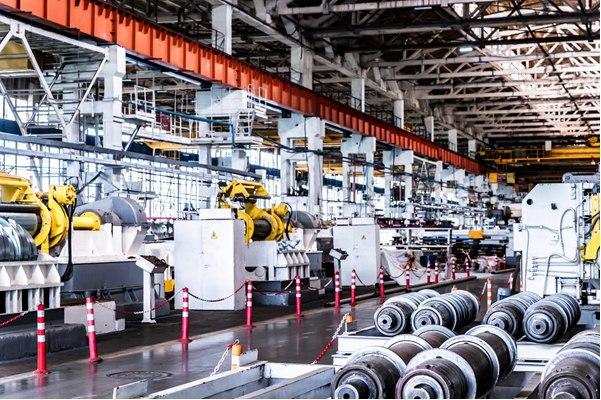Research has shown that maintenance programs can drive meaningful performance across sites. Manufacturing, facilities, hospitality, healthcare, and large scale business enterprises traditionally use CMMS software as these solutions can be easily implemented in any industry sector to improve maintenance and operational efficiency.
Today CMMS software and work order software is used by organizations of all sizes as they have become more affordable and easier to use.
What are the Types of Work Order Management Softwares?
There are 3 main types of work order management software which are listed below.
Simple Work Order Systems
Work order software contains features focused on creating, distributing, and tracking work orders. The ability to integrate with other systems including client relationship management (CRM), contract management software, and asset monitoring is also useful for certain organizations.
If you prefer to have peace of mind, this easy type of program is the perfect solution for you.
Computerized Maintenance Management Systems
Computerized Maintenance Management Systems (CMMS) and Enterprise Asset Management (EAM) functions include job order management modules, internal maintenance facilitation, scheduling repairs, and other maintenance activities.
These CMMS applications are particularly useful for manufacturing firms and large-scale businesses with branches around the globe. Their key features deal extensively with preventive maintenance scheduling, asset history, and essential equipment management.
Field Service Management (FSM)
This type of app is targeted to large-scale businesses and enables users to automatically update and send work orders to mobile teams on standby. Vehicle tracking, GPS check-in, and other properties are some of the features that FSM offers. If you work with geographically scattered teams, FSM will help to improve your productivity.
What is a Work Order App?
Mobility is a valuable asset for any maintenance team. Internet-enabled devices allow technicians to drastically increase their efficiency. A work order app will provide the user or employee with tools to create and check progress on maintenance tasks from the mobile device directly.
This can help technicians communicate with field employees effectively without having to physically travel between their office and the on-site location. As the digital world, we live in constantly expands, mobility is becoming more of a need for organizations to run competently.
Examples of Work Order Apps
Fracttal
Fracttal is a CMMS mobile app that works with businesses across various industries. The key features include work-history tracking, work order management, inventory control, and preventive maintenance.
Fracttal also provides more tools such as their Asset Cloud Application (ACA) which enables users to register, monitor, and manage the assets of an organization from a centralized location.
Limble
Limble is known to be a CMMS app that improves the productivity of your maintenance team. The application can be downloaded from Google’s Playstore and Apple’s iOS store. Limble boasts that by using their software, your business will experience communication, accountability, and productivity boosts of at least 30%. The mobile CMMS features that Limble offers are listed below.
- Speech recognition and speech to text.
- Log and assign work orders under 60 seconds.
- Start new work orders remotely.
- View assigned work orders and private messages.
- Receive communications through email and push notifications.
- Check for critical asset information when running diagnostic checks.
MaintainX
MaintainX is an all-in-one CMMS software solution known for its friendly user interface and contains all the same features that their desktop app has. With MaintainX’s mobile app, users get access to the following CMMS features.
- Track time spent on completed work orders.
- Create and manage preventive maintenance schedules.
- Check the progress calendar and view the current status of work orders.
- Create a group chat or team chat
Main Features of a CMMS Software
Progress Updates
In an organization, the work order will move across employees to different facilities and departments. Managers can view completed tasks, ongoing projects, progress reports and follow up with department heads. With CMMS software, the transparency of the process will increase and in turn, so will the productivity.
Work Requests
By using digital work order requests, the possibility of a lost work order is eliminated as each order can be listed according to priority, due date, etc. Internal workflows are also improved as the required information within the order creation system is logged and applied when needed.
Asset Management
Asset management is an important component featured in CMMS. It enables users to check parts and inventory available with the existing work orders and preventative maintenance schedules. You can also monitor work order history on your assets to detect trends over time.
Mobile Access
Most management software offers mobile app solutions that allow its users to check the status of their tasks in real-time for current and future orders. Employees can increase productivity, complete tasks, and update their schedules on the go.
Choosing a Computerized Maintenance Management System
Before you select a CMMS management software, make sure to check for the following features.
Ability to receive real-time notifications
Real-time notifications can be set when a work request is created or the status of a work order is changed. Users can immediately be informed and updated on the progress of the task at hand. Notifications can be enabled in the form of push notifications, email, and text messages.
Ability to send in-app messages
A good CMMS work order management software will have a chat feature where department heads can message their team directly within the app itself and eliminate redundancies in communication.
Conclusion
Managing teams the old fashioned way doesn’t work anymore. CMMS software is more affordable and accessible than ever before. Businesses of all sizes should use software to help them stay on track and get things done.
